The Northeastern United States is home to many Indigenous communities, each with its own rich history. This guide is not an attempt to gather every resource related to learning about the Indigenous history of this area but a selection of web resources that provide an introduction and paths to additional resources. Amherst College campus is situated in the homelands of the Nonotuck. In a petition to Thomas Pownall, Governor of the Province of Massachusetts, the proposed name “North wattock” (a variant of Nonotuck) was rejected in favor of naming the new town in honor of Lord Amherst.
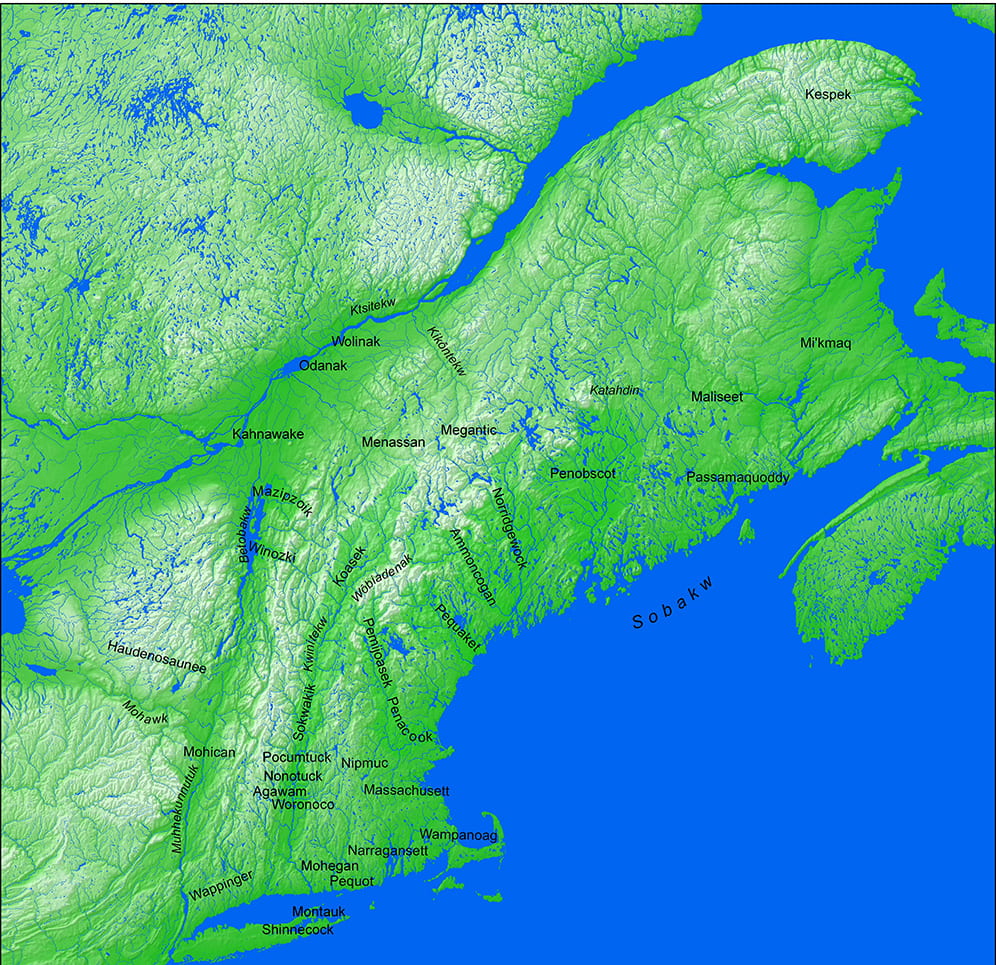
Many of the maps on this site are taken from Professor Lisa Brooks’s site for her book The Common Pot: The Recovery of Native Space in the Northeast. These GIS maps show the geological features of the land without colonial borders and mostly use Indigenous place names.
Land Acknowledgements and Regional History
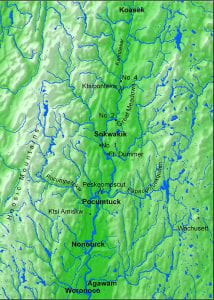
Springfield-Agawam Indigenous Land Acknowledgement This site is particularly valuable for the wealth of links and supporting documentation about Indigenous history in the Connecticut River Valley far beyond the boundaries of today’s Springfield, MA. The list of links to “Southern New England Native American Nations, Museums, and Organizations” includes tribal communities and resources in Massachusetts, Connecticut, and Rhode Island.
The Tamaquog Museum features “A Guide for Land Acknowledgements” by Lorén Spears with links to several examples.
The Nipmuc Nation maintains a website with excellent historical information on Indigenous peoples in Massachusetts.
The Wampum Trade Routes map that we use as the header of this website is a reminder of the cultural importance of the manufacture and circulation of wampum in the Northeast and throughout Native Space. Penn University Professor Margaret Bruchac (Abenaki) is the leading scholar of wampum and maintains On the Wampum Trail to provide regular updates on her research. Several of her publications on various aspects of Indigenous history in the Kwinitekw region are available online through Penn Libraries Scholarly Commons. Her essay “Native Presence in Nonotuck and Northampton” is a short introduction to local history. Dr. Bruchac’s dissertation “Historical Erasure and Cultural Recovery: Indigenous People in the Connecticut River Valley” is available online.
Native Northeast Portal. “The Native Northeast Portal contains primary source materials by, on, or about Northeast Indians from repositories around the world. Documents are digitized, transcribed, annotated, reviewed by the appropriate contemporary descendant community representatives, and brought together with scholarly annotations and academic/community commentary into one edited interactive digital collection. The Portal currently contains thousands of records associated with scores of Native communities.”
Our Beloved Kin: Remapping a New History of King Philip’s War. This website accompanies Professor Lisa Brooks’s book Our Beloved Kin and includes multiple interactive maps that trace the story of seventeenth-century colonial warfare across the New England landscape.
The American Antiquarian Society in Worcester, MA hosts excellent online exhibitions featuring vital manuscripts and early printing in Indigenous languages in seventeenth-century Massachusetts: “Reclaiming Heritage: Digitizing Early Nipmuc Histories from Colonial Documents” and “From English to Algonquian: Early New England Translations.”
Pequot author William Apess was born in nearby Colrain, MA. Amherst faculty, students, and staff participated in the unveiling of a historical marker to Apess in the fall of 2018. He was one of the most prolific Native writers of the early nineteenth century, publishing five books between 1829 and 1837. All of his works are held in first and later editions in the Archives & Special Collections and are available through Amherst College Digital Collections.
Firsting and Lasting: Writing Indians Out of Existence in New England by Jean O’Brien is an excellent introduction to the ways the ongoing presence of Native people has been erased from the dominant historical narrative of New England over the past 200+ years. This book is available online via JSTOR.
Five College Resources
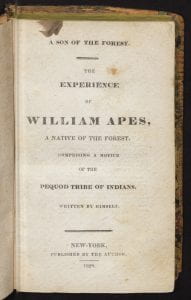
The Kim-Wait/Eisenberg Native American Literature Collection, Amherst College Archives & Special Collections. Amherst College is now home to a collection of more than 3,000 books written by North American Native authors ranging from the eighteenth century to the present. These items are included in the FiveCollege Library Catalog and several items have been digitized and added to Amherst College Digital Collections.
The Digital Atlas of Native American Intellectual Traditions. “The Digital Atlas of Native American Intellectual Traditions (DANAIT) is an IMLS-funded project to create a space for conversation and collaboration, with the goal of developing a framework for sharing, exploring, and visualizing Native-authored library and archival collections.”
The Five College Native American and Indigenous Studies program is a very active collaboration among students, faculty, and staff across the consortium. The consortium recently received a major grant from the Mellon Foundation to expand this program.
National Organizations
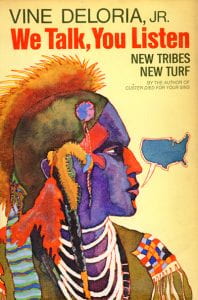
United Nations Declaration on the Rights of Indigenous Peoples “The United Nations Declaration on the Rights of Indigenous Peoples (UNDRIP) was adopted by the General Assembly on Thursday, 13 September 2007, by a majority of 144 states in favour, 4 votes against (Australia, Canada, New Zealand and the United States) and 11 abstentions (Azerbaijan, Bangladesh, Bhutan, Burundi, Colombia, Georgia, Kenya, Nigeria, Russian Federation, Samoa and Ukraine). Years later the four countries that voted against have reversed their position and now support the UN Declaration. Today the Declaration is the most comprehensive international instrument on the rights of indigenous peoples. It establishes a universal framework of minimum standards for the survival, dignity and well-being of the indigenous peoples of the world and it elaborates on existing human rights standards and fundamental freedoms as they apply to the specific situation of indigenous peoples.”
Native American and Indigenous Studies Association (NAISA) “The Native American and Indigenous Studies Association (NAISA) is an interdisciplinary, international membership-based organization, comprised of scholars working in the fields of Native American and Indigenous Studies, broadly defined.”
The Association of Tribal Archives, Libraries, and Museums (ATALM) “The Association of Tribal Archives, Libraries, and Museums is dedicated to preserving and advancing the language, history, culture, and lifeways of indigenous peoples. On an annual basis, it offers professionally guided learning opportunities to over 2,600 tribal cultural practitioners from 352 Native Nations, as well as online training to an additional 1,432 participants.“
The American Indian Library Association (AILA). “An affiliate of the American Library Association (ALA), the American Indian Library Association is a membership action group that addresses the library-related needs of American Indians and Alaska Natives. Members are individuals and institutions interested in the development of programs to improve Indian library, cultural, and informational services in school, public, and research libraries on reservations.“
National Museum of the American Indian. “A diverse and multifaceted cultural and educational enterprise, the National Museum of the American Indian (NMAI) is an active and visible component of the Smithsonian Institution, the world’s largest museum complex. The NMAI cares for one of the world’s most expansive collections of Native artifacts, including objects, photographs, archives, and media covering the entire Western Hemisphere, from the Arctic Circle to Tierra del Fuego.”
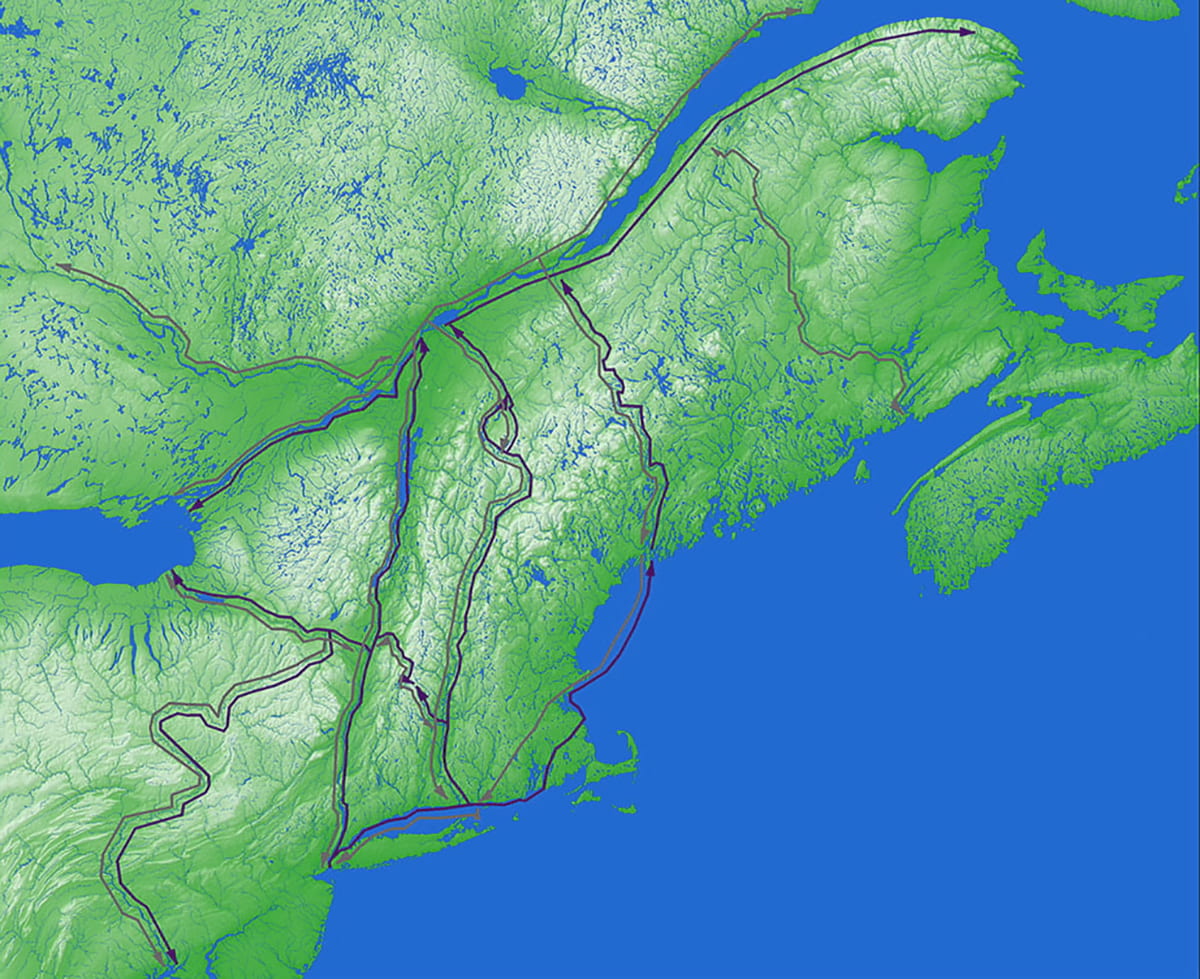
You must be logged in to post a comment.